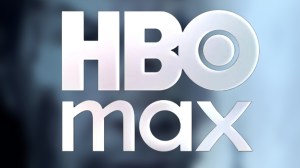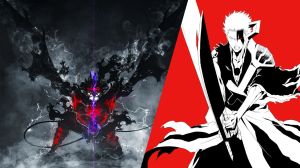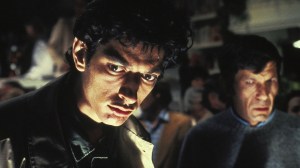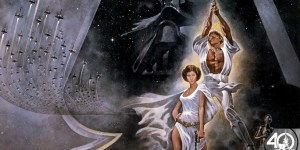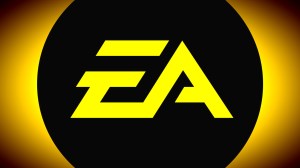
While Marvel vs. Capcom: Clash of Super Heroes may not have invented the cross-tag fighting platform (that honor would go to X-Men vs. Street Fighter, which released years before), it certainly solidified it, adding a smorgasbord of new characters from both the Marvel and Capcom universes to duke it out in high-flying fashion, with a number of powerful moves and super techniques that would leave opponents in the dust.
Videos by ComicBook.com
The game celebrates its 20th anniversary today, so we’re looking back at the game, and what made it work so well for its time. Obviously, Marvel vs. Capcom 2: New Age of Heroes, which released two years later, would go on to even bigger success, but one can’t forget about the greatness that the first MVC was capable of.
A Short But Stable Supply of Superstars

Though Clash of Super Heroes only features 17 characters (compared to the dozens of combatants that showed up in the likes of Marvel vs. Capcom 2 and Ultimate Marvel vs. Capcom 3), it benefitted from picking some ideal choices, including Strider Hiryu (from the Strider series), Spider-Man, Wolverine, War Machine, Jin Saotome, Morrigan, Ryu and a number of other favorites. In addition, you could call upon another character to provide a secondary assist attack, which opened up the roster even further with possibilities, including the unknown soldier from Forgotten Worlds and, before he would become a playable character in later games, Arthur from Ghouls ‘n Ghosts.
But the game also included secret characters that could be chosen with inputs on the character select screen, including a modified version of Chun-Li known as Shadow Lady, and Roll from the Mega Man series. And they’re still intact today, if you feel like hunting down the arcade game.
The Amazing Gameplay

As we mentioned before, Marvel vs. Capcom managed to solidify the fighting engine that Capcom first introduced with X-Men Vs. Street Fighter. Super techniques are a joy to pull off, complete with flashing background for dramatic effect. You could also execute what’s known as a Variable Cross, in which both of your partners could fight against the two opponents at the same time, creating a new possibility of turning the tide of a match in your favor. That, combined with great gameplay we’ve come to expect from Capcom’s fighting standard and solid switch-out tactics, made for a fun time – and it’s something that can still be enjoyed today.
That said, not all of the home versions were equal…
A Tale of Two Home Versions

Marvel vs. Capcom made its way to home consoles shortly after its arcade release, for PlayStation and Dreamcast. While some fans believed that the games would be the same, one missing feature made all the difference to point out a true winner in the home market.
The PlayStation version featured all the characters, gameplay and action of the original arcade release, but with one missing feature – being able to tag in partners. It was believed that the system’s lack of RAM forced Capcom to scrap the feature to continue to make the game playable, but it suffered as a result. A lot of fans felt cheated by the lack of the feature, though some were still able to enjoy the action.
Meanwhile, the Dreamcast version, which arrived shortly after the PlayStation one, was truly the arcade perfect port. Literally all of the action we’ve come to expect from the coin-op is intact, right down to the swap outs, the beautiful animation and the sharp gameplay. While it didn’t have any new features from the arcade game, many players were content with what it had to offer.
And this wouldn’t be the game’s only home release, either.
Marvel vs. Capcom: Origins

With the port of Marvel vs. Capcom 2: New Age of Heroes being a success on Xbox 360 and PlayStation 3 as a downloadable game, Capcom opted to bring more fighting fun to those systems with Marvel vs. Capcom: Origins, which included both Clash of Super Heroes and Marvel Superheroes vs. Street Fighter in one convenient package. The games featured online play, as well as other features that made it a huge draw for fighting fans, especially for a low price.
But, nothing last forever. The rights to the MVC series lapsed, and Capcom eventually pulled the game from digital sale. That said, a lot of people still have it, and enjoy it, and with a new deal in place, hopes are high that we’ll see another release down the road for Xbox One and PlayStation 4 – and maybe even Nintendo Switch while we’re at it.
The Creation of a Legacy

With Marvel vs. Capcom doing incredibly well for the publisher, there was true potential for sequels to come along – and come along, they did. Marvel vs. Capcom 2: New Age of Heroes followed in 2000, not only featuring a larger roster, but also improved fighting mechanics with three-person teams. For good measure, the Dreamcast got a solid port of the game as well, and the Xbox and PlayStation 2 would eventually get the game as well.
Marvel vs. Capcom 3 and Ultimate Marvel vs. Capcom 3 followed soon after, introducing a bigger roster of more diverse characters like Rocket Raccoon, Iron Fist and Phoenix Wright, as well as even more contemporary tactics and online play. The game initially released for Xbox 360 and PlayStation 3, but then Capcom surprised the world by releasing it between 2016 and 2017, paving the way for the series’ return with Marvel vs. Capcom Infinite.
Now, some players have written off Infinite since its release late last year, without realizing that it’s not quite the Marvel vs. Capcom 4 that Capcom was advertising. That said, it’s managed to find its “groove” with the help of DLC that includes Venom, Black Panther and Monster Hunter, and Capcom hopes to stir the pot again with a potential new season for the game, similar to what it did for Street Fighter V.
So, yeah, Marvel vs. Capcom really has come a long way over the past two decades, but the original still remains a joy to behold. Track it down today – especially for Dreamcast.


